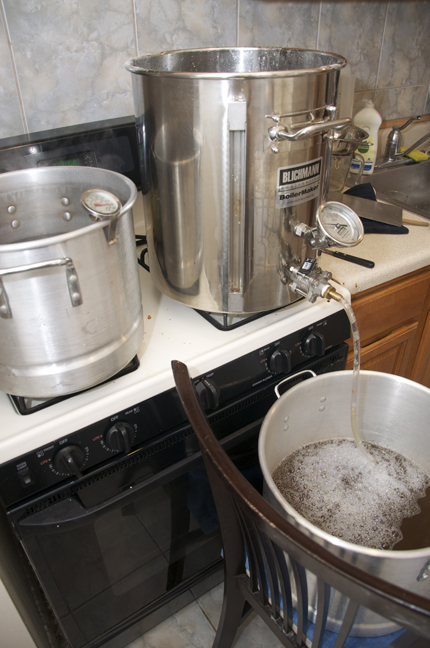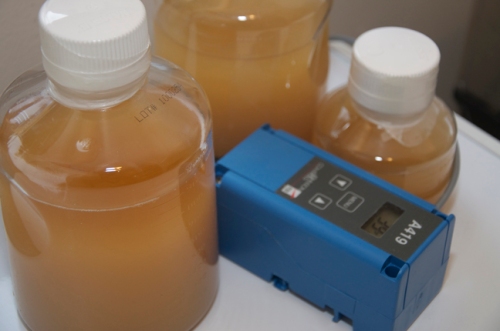Decocting a Bohemian Pilsner
In New York City this past friday, temps shot up to 75°F for the first time this year. After having one of the longest winters with the most snow, I think many New Yorkers are anxiously waiting for warmer weather. Spring weather means refreshing beers are to be made, and for this batch I’ve decided to make a Bohemian Pilsner. This beer was first brewed in 1842 in Pilsen, Bohemia (now the Czech Republic) when German brewers became tired of brewing ales that readily became contaminated. With a new lager yeast from Bavaria, brewers now fermented there beers very cool, often in caves. This beer would be the grandfather of American Lagers. The beer’s characteristics are brilliantly clear and yellow to gold in color. The water used is very soft, and the malts are predominantly German Pilsner malt. Some of these beers have a distinctive noble hop character with the most popular choice being Czech Saaz.
Traditionally, pilsners were brewed with a decoction mash. This technique involves boiling a portion of the thickest part of the mash and adding it back to the main mash attain specific temperatures targeting enzymes in the malt. For example, one can boil a portion of the mash and add it back to the main mash to reach 147°F, where β-amylase is most active.
For this technique you will need an extra pot. The basic steps that I used in my brewday:

- Dough in at your desired temperature. Usually, this is a protein rest at 122°F – 124°F. Hold for ten minutes.
- Take a portion of the thick mash (I used a colander) and heat to 145°F. The amount to use varies depending on you target temp and you may need to use an online decoction calculator. I use Beersmith. Hold for ten minutes.
- Bring decoction to a boil (takes ten minutes). The main mash will be at 122°F for a total of 20-25 minutes while the decoction is heating and boiling.
- Add back to the main mash to reach a temp of 147°F to target β-amylase. Hold for ten minutes.
- Again decoct a thick part of the mash and heat to boiling (the amount will be less than the previous decoction). This will take ten minutes so the main mash will be at 147°F for 20 minutes while boiling.
- Add back to the main mash to heat up to 158°F to target α-amylase. Hold mash for another 20 minutes.
These steps might have been faster than normal decoction mashing – some brewers spend one hour to mash at 148°F.
The whole goal of a decoction is create a malty beer that is fully attenuated. This technique boils part of the mash to break up the starch to allow for enzymes to access the sugars. The boiling also increase melanoiden formation which lends a pleasant sweetness.
The recipe (5.5 gallons):
- 11 pounds of German Pilsner Malt (Weyerman)
- 0.5 pound of Carapils (Briess)
Decocted as described above.
Mashed out and batch sparged as usual. Brought a total of 7 gallons to a boil for 90 minutes. Pilsner malt contains lots of DMS precursors which needs to be boiled off longer than 60 minutes.
Started hops additions at 60 minutes:
- 1.0 oz of UK First Gold at 60 minutes (major bittering component)
- 1.0 oz of Czech Saaz at 30 minutes
- 1.0 oz of Czech Saaz at 5 minutes
- 1.0 oz of Czech Saaz at flame out
- 1/2 tsp of Wyeast nutrient and 1 Whirlfloc tablet at 20 minutes.
Cooled wort to 55°F and transferred to chestfreezer set to 42°F. Left the wort cool over night to 47°F. The next day, pitched 400 billion cells of Wyeast 2278 (Czech Pils yeast) into wort and set chest freezer to 53°F. Lager yeast require a lower temperature than ales, often in the range of 50°F to 55°F.
- OG: 1.056
- IBUs: 37 (Tinseth)
